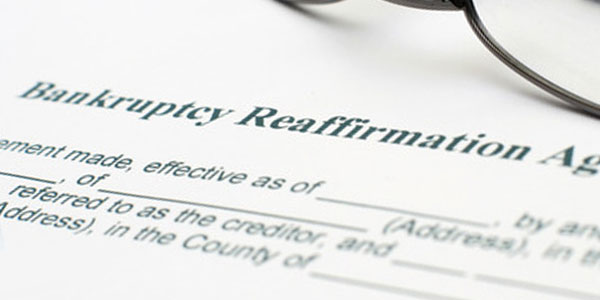Chapter 7 Reaffirmation Agreement
What is a reaffirmation agreement in Chapter 7
A Chapter 7 reaffirmation agreement is where the evil creditor is trying to get you to owe money after the bankruptcy is over. This is of course a bad thing. But there’s one problem: in some cases, you have to sign the reaffirmation agreement. Note: one advantage of Chapter 13 bankruptcy is no need to reaffirm debts.
What does it mean to reaffirm a debt?
To reaffirm a debt is to agree with the lender that you’ll continue owing a debt. You’re basically saying, “I’m good for it.” You’re giving the creditor the power to maybe take things from you and sue you if you ever break the agreement.






